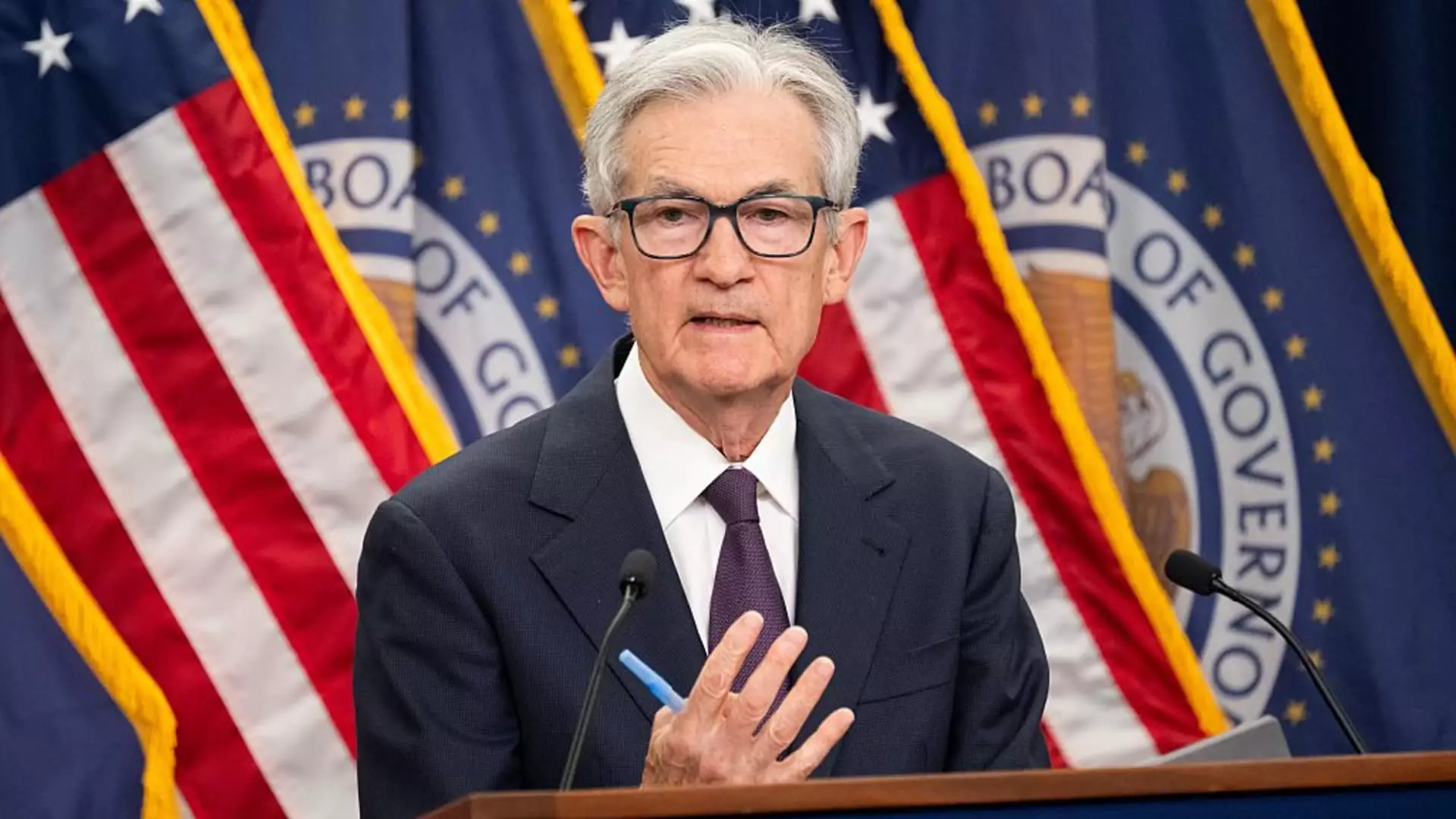In a world of economic unpredictability, Federal Reserve Chair Jerome Powell finds himself navigating a treacherous sea of inflation and tariffs, a precarious balancing act that could determine the financial stability of the nation. As Powell addressed two congressional committees, he portrayed a robust economic growth narrative while simultaneously grappling with the unsettling reality that inflation remains above the Fed’s ideal target. His remarks seemed almost like an echo of fiscal caution, a chorus that reverberated with the hesitancy to intervene without a clearer understanding of tariffs’ ramifications on American prices. This reluctance raises a pivotal question: how long can the Fed afford to wait before acting decisively?
In his repeated assertion that the economy stays “solid,” Powell underscores a duality present in his outlook. Yes, the labor market is showing signs of full employment, yet the persistence of inflation over the Fed’s 2% target is stark. The contradiction in Powell’s speech was palpable. Economic growth is laudable, but unchecked inflation can erode the very fabric of what drives that growth. The message landed heavy: it appears that Powell is not just watching the storm but is firmly anchored in place, concerned yet immobile.
The Shadows of Tariffs
Amidst Powell’s cautious optimism, he consistently referenced the looming uncertainty of President Trump’s tariffs on imports. Here lies a fundamental challenge — the tariffs pose a dilemma that complicates the Federal Reserve’s decision-making process. History has shown that while tariffs may induce a temporary spike in prices, they rarely result in sustained inflation. Nonetheless, with the economy being more interconnected and global than ever, the consequences of tariffs in the current environment can be much less predictable.
Trump’s sharp criticism of Powell only heightens the tension in this already intricate ecosystem. The fact that the President refers to Powell as a “very dumb, hardheaded person” encapsulates the combative undercurrents of modern economic governance. It is distressing to witness a scenario in which the leader of the free world publicly disparages the head of the central bank. This spectacle is not just a drama unfolding in the political arena; it is a manifestation of deeper fissures that could potentially destabilize the economy at a time needed for collaboration and foresight.
Muddled Market Signals
The Federal Open Market Committee (FOMC) recently voted unanimously to maintain interest rates, showcasing an unusual alignment among Fed officials. However, the underlying discord is evident in the “dot plot” – an anonymous survey of FOMC members’ future interest rate expectations. Nine officials favor no more than one rate cut in 2023, while eight anticipate two, and two think we could see three cuts. The scatter of predictions indicates not just uncertainty but complexity within the Fed’s ranks that could lead to erratic decision-making, further complicating the economic landscape.
And what are we left to decipher from these diverse outlooks? It underscores a fundamental truth: the Fed is grappling with not just economic indicators but the emotional pulse of a nation that remains on edge. As inflation rates inch upwards, with indications suggesting a rise to 2.3% by May, there’s a sense of urgency that can no longer be ignored. The dialogue about the consumer price index, showing a modest increase of just 0.1%, belies deeper domestic anxieties correlated to prolonged inflationary pressures that could spiral into a significant economic challenge.
Welfare versus Stability
One of Powell’s notable refrains during his testimony was the Fed’s imperative to keep long-term inflation expectations anchored. His statement about the necessity of price stability to sustain employment is an acknowledgment of a critical truth: the interdependence of these factors is inseparable. However, this delicate balance may be placing undue pressure on the institution. The promise of strong labor markets and overarching economic vitality could collapse under the weight of persistent inflationary tendencies, resulting in a poorly calibrated response to evolving economic realities.
Despite markets harboring a 23% probability of a rate cut in the upcoming FOMC meeting, caution reigns supreme. The possibility of further cuts in September appears more favorable, yet such indecision could signal a lack of conviction in policy efficacy. In this moment of economic complexity, it becomes increasingly clear that the Federal Reserve’s approach is better characterized by its hesitance to act rather than its willingness to adapt quickly to shifting economic tides.
In an age where rapid responses are paramount, this hesitancy may ultimately haunt Powell and the Fed, echoing through the corridors of economic consequence for ordinary American citizens, who bear the brunt of policy decisions laden with uncertainty.



Leave a Reply